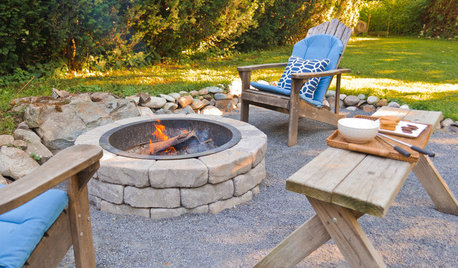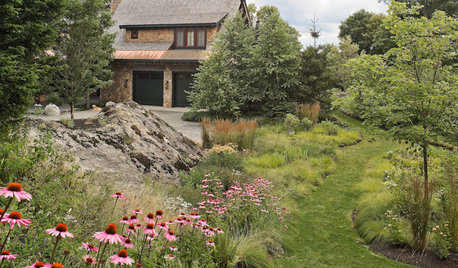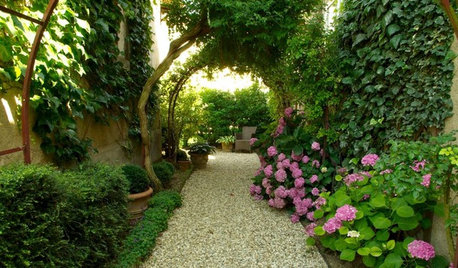And apples....
Got a report which you might have seen from Dr. Ieuan Evans...
This year’s fruit crops in the Edmonton area are phenomenal, particularly
for apples, pears and cherries – no shortage of pollinators here. Last
year, because of the May 17, 2016 minus 10 frost, only my Valiant grapes
gave a decent crop. My apple crop from around 30 ornamental and
fruiting trees gave me a grand total of around 25 apples last year. My
next-door acreage collected 20 apples because of the -10 frost. I
couldn’t find an ornamental crab apple on any of my trees. Both my
neighbour and I had apple maggot in 2015, how did they get out here? In
2016, we collected every apple that we could find and we microwaved
every single one of the 25 and 20 maggot infested apples that we could
find after lots of looking. This year 2017, both of us appear to be
maggot free. The message is if you want to grow apples get rid of the
larger ornamental crab types and account for every apple if you are on
an isolated growing area such as a rural acreage. The very small
ornamental crab apples do not seem to be infested by the maggots.
If
you have maggots then of course you’ll have to use the plastic bag or
nylon stocking method. To date I’ve not seen maggots in pears, plums or
cherries.
A
problem disease in this area is bacterial fire blight. The old story is
that fire blight is the result of wet summers and growing susceptible
varieties. Not so. Fire blight is a major problem in dry hot summers.
How do I figure this out? Countries with major fire blight problems are
Egypt, Turkey, Israel and Greece and US areas such as California and
Maryland. Fire blight has been accidentally introduced into the UK and
Northwestern Europe many times but the cool rainy weather prevents its
spread. Fire blight is a non-problem in the UK. In the Edmonton area
fire blight is a problem in hot dry summers.
Back
in 1990 when I was with Alberta Agriculture, using diagnostic
techniques from Michigan State University we were able to show that the
fire blight organism (bacterium, Erwinia amyhlouora) was always present
in most apple blossoms as well as pear, saskatoon, mountain ash,
cotoneaster and other related plants. The problem was that no disease
showed up. What it means is that the bacteria that caused fire blight
are very common on host plants but that disease break out is uncommon,
i.e. it probably lives on its host as a harmless epiphyte. Raspberries
and blackberries also suffer from fire blight but the stain of bacteria
that infects them do not infect apples, pears and the other mentioned
plants. Raspberry fire blight is more common in the Edmonton area, than
in apples, pears and mountain ash. In raspberries, you see it as lack
of berries and canes and leaves that turn black, especially young canes.
In
and around the early nineties when I lived in Millwoods with a garden
full of apple, cherry and apricot trees as well as raspberries and
strawberries. I frequently found damage on my apple trees and raspberry
canes in particular. In never found fire blight on cherries but I did
confirm minor fire blight damage on Manchurian apricots. This was
confirmed by laboratory tests and when I reported this at an
international meeting in 1995 at St. Catherine’s, Ontario I was told
that this was a first ever report of fire blight damage on apricots.
At
this same meeting, I reported the fact that fire blight from damaged
apple shoots could infect and kill Boyne raspberry canes. This causes
something of an uproar because this kind of event never happened. How
did I arrive at this conclusion? In my Millwoods garden I noticed that
every year I would have good crops of Honey Queen raspberries but in an
equal patch of Boyne raspberries I hardly got a berry. The flowers of
the Boyne raspberry were killed off after bloom as well as resulting in
many blackened canes and leaves. No damage was ever seen on the Honey
Queen raspberries. After a couple of years of this I did an experiment
with lots of replicates.
I
got raspberry strains of fire blight from a number of sources around
Edmonton. I inoculated 5 young shoots, each of Boyne and Honey Queen
with the raspberry fire blight strains. All 10 shoots wilted then
blackened and died. I repeated the experiment inoculating 5 young
shoots each of Boyne and Honey Queen with the apple strain of fire
blight endemic in my garden. The honey Queen raspberry shoots were
unaffected but the Boyne shoots wilted and blackened in the same way as
when they were inoculated with the raspberry fire blight.
This
finding caused a big stir at the International Congress on Fire Blight
that I was attending at St. Catherine’s Ontario in 1995. This wasn’t
supposed to happen. The result of this research was published in the
Dutch Publication under the title Fire Blight of Raspberries in
Alberta. Acta Horticulturae, 411: 69 – 72.
My
findings were later confirmed by a Dr. Gordon Braun, a researcher at
Fredericton, New Brunswick who was working on Boyne raspberry and
seedlings selected from this variety. Dr. Braun is presently employed
by Agriculture Canada in Nova Scotia.
My
basic conclusion from this research is that you cannot grow Boyne
raspberry in an apple or saskatoon orchard and avoid significant
outbreaks of fire blight. The fire blight organism goes from apple and
other blossoms to the later opening raspberry flowers. From the
raspberry flowers, the high levels of the fire blight ooze somehow get
back to the young shoots on apple and other susceptible fruit species.
Sprout
Farms at Bon Accord, Alberta had high levels of fire blight on some
apple varieties on an annual basis. These outbreaks came to an end when
the Boyne raspberries that they sold had their flower buds clipped off
before they opened.
Boyne
raspberries have no place in a fruit orchard if you want to minimize or
prevent outbreaks of fire blight on your fruiting trees and bushes.
Apple Scab
This
is the first time that I have had any amount of apple scab on my apple
trees (shrubs). I noticed that Garland, Fox Red, Calgary Red, Norkent
and a couple of others were quite susceptible, with scab lesions on
fruit and leaves, whereas Goodland, Sweet 16 and Sandra seemed immune
with scab free leaves and fruit.
by Dr. Ieuan Evans













Konrad..just outside of Edmonton AlbertaOriginal Author
Related Discussions
Fear and loathing: fire blight?!?!? Help!
Q
Summer-bearing raspberries worth it? Other raspberry suggestions
Q
Question for raspberry growers!
Q
Raspberries, what are you growing ?
Q